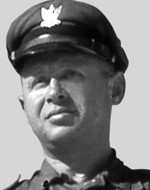Son of Chaya-Sarah and Shlomo-Yosef was born on July 20, 1924 in Poland. Israel was able to complete part of his high school studies in his native country before the outbreak of World War II. During the Holocaust, he worked in a labor camp in Germany. In 1941, Israel was sent to an aircraft manufacturing plant. He succeeded in his work as an airplane mechanic, and because he was considered a good professional he was transferred from factory to factory until Germany surrendered. When the war ended, Israel found itself uprooted, homeless and without family. Together with masses of survivors, he began to aspire to immigrate to Palestine. In 1946, Israel succeeded in immigrating to Israel. He was sent to Kibbutz Nitzanim in the Negev, joined the ranks of the Hagana and assisted in the removal of illegal immigrants on the shores of southern Israel. In Nitzanim, he was a member of the Hagana, and became a machine gunner, and his friends called him “Siggy” and was known to the IDF until his dying day. When the War of Independence broke out, Ziggy was recruited for full service in the Haganah. He was employed in escorting convoys, mainly in the Negev, and defended the settlements as a machine gunner. Siggy participated in the decisive battles at Kibbutz Nitzanim until the kibbutz was defeated and the remaining defenders were taken to the Egyptian captivity. On June 7, 1948, the day he fell into Egyptian captivity, he began his long service in the IDF, and in February 1949 he signed an armistice agreement with Egypt. April 1950. When he was released, Siggy began his civil life, married and built his home in Tel Aviv, and began working as a civilian in the Israel Air Force as a civilian in the Israeli Air Force. 1959 Siggy volunteered for career army service and was awarded the rank of Major General. He was stationed in the Air Force by profession – from an aircraft builder. In December 1961, Zigi was sent to a professional training course in Cyprus as part of the British Air Force, and about a year later, when the IDF began to receive French aircraft, he was sent to a professional training course in France. Siggy’s commanders mentioned him as an excellent organizer, well versed in his profession, dedicated, meticulous in integrity, able to cultivate friendships with his commanders and subordinates. They saw him as an exemplary educator and commander. In 1967, prior to the Six-Day War, Siggy played an important role in preparing the air force to strike enemy armies. During his service, he held various positions in Air Force workshops. After the Six-Day War, he was awarded the Kaplan Prize for excellence, resourcefulness and improvisation during the war, and in 1975 he was sent to the United States for the Cobra and CFC15 “As was his custom, he excelled there among his instructors at the American Air Force bases in Corpus Christi and in Virginia. In July 1977, Siggy was promoted to the rank of sergeant, and two years later, he was released from military service at his request, although he was signed until 1999 and retired, but not for long. In the middle of 1980 he was offered a return to military service, in the IAF. The commanders, who asked to be returned to the service, explained their request: “Siggy is one of the leaders and professionals in the corps of technicians in the corps, and his skills must be fully exploited and placed as a senior controller in the field of helicopters.” In another appeal, IAF commanders asked to return Siggy to the service: “One of the bases has recently become an operational base in the field of helicopters, and helicopters have been integrated into it, taking part in regular activities. With a high-level man in his head “-and Siggy was the proper person”Because he has a concentration of professional and organizational knowledge, he has experienced all the wars, at work that required a high level of improvisation and resourcefulness.” Upon his return to the regular army service, Siggy joined forces in preparation for the Peace for Galilee War. He also received all the signals that the IDF gave to the fighters in Israel’s wars, and he received the “Ala”, the War of Independence, the Sinai Campaign, the Six Day War, the Yom Kippur War, and the Peace of the Galilee. Ziggy died of a sudden Lev attack at the age of 60. At the request of his family, he was buried in the civilian cemetery in Holon with his beloved wife Ada at a full military ceremony, leaving three daughters – Sarah, Yaffa and Shlomit. Left a large cavity in a corps that he so loved … The man, the artist who knew how to create masterpieces from scrap and bring metal to life by hand, and his unit commander wrote in a letter of condolence to his family: “Siggy began his career in the Navy See 35 years ago. Everyone recognized him as an excellent soldier, and beyond that, as a sociable person, energetic and professional and organizational. His great experience as a guide, the guide’s pain, stood out and directed the soldiers and civilians of the entire unit. His pleasant temperament and pleasant manner gave him a warm,
